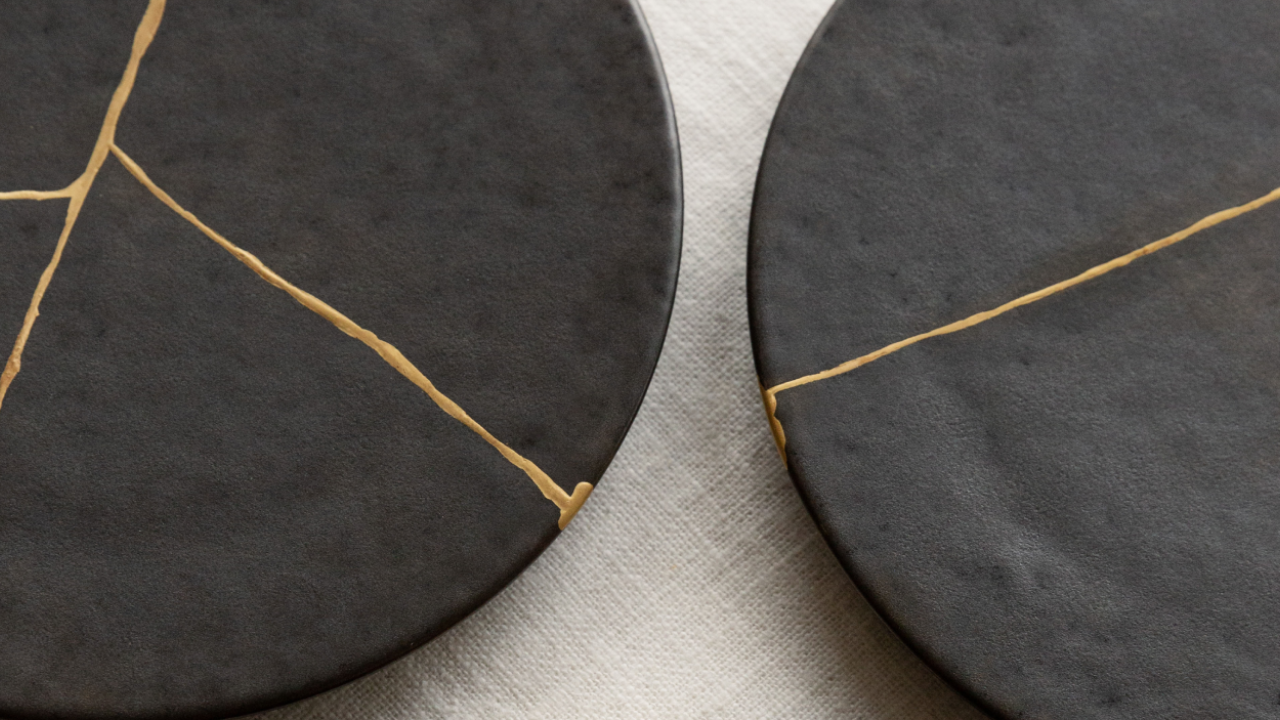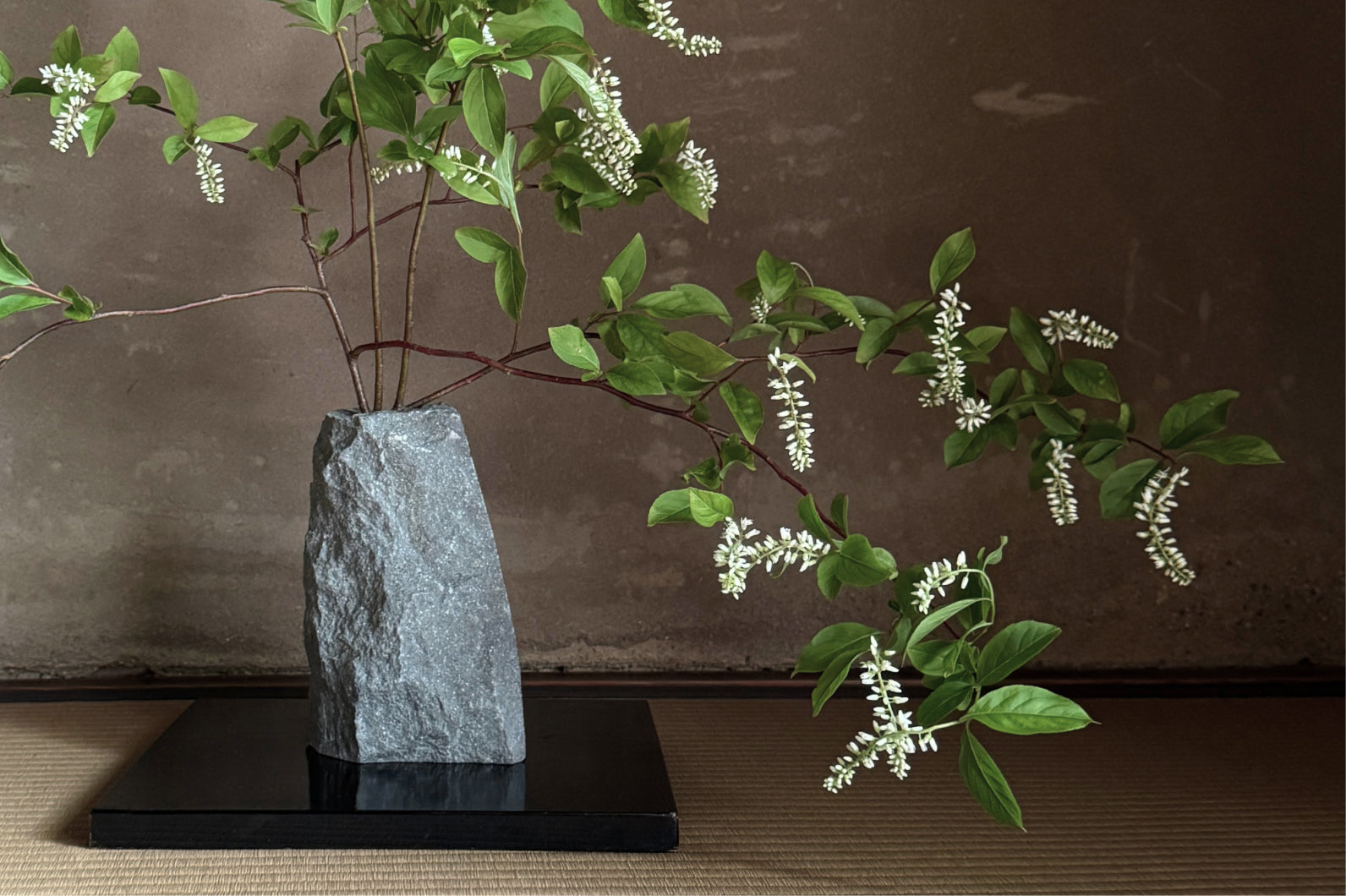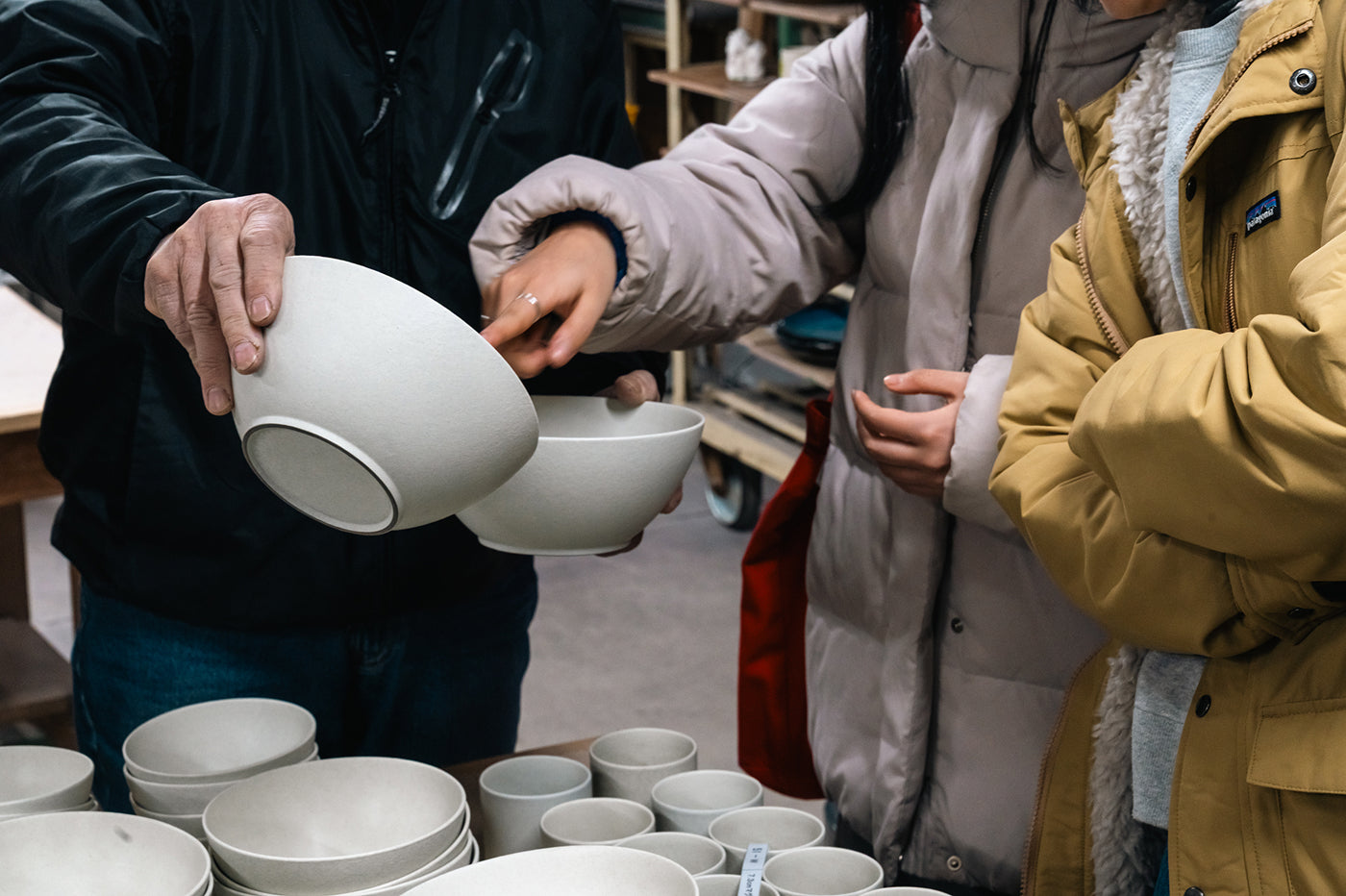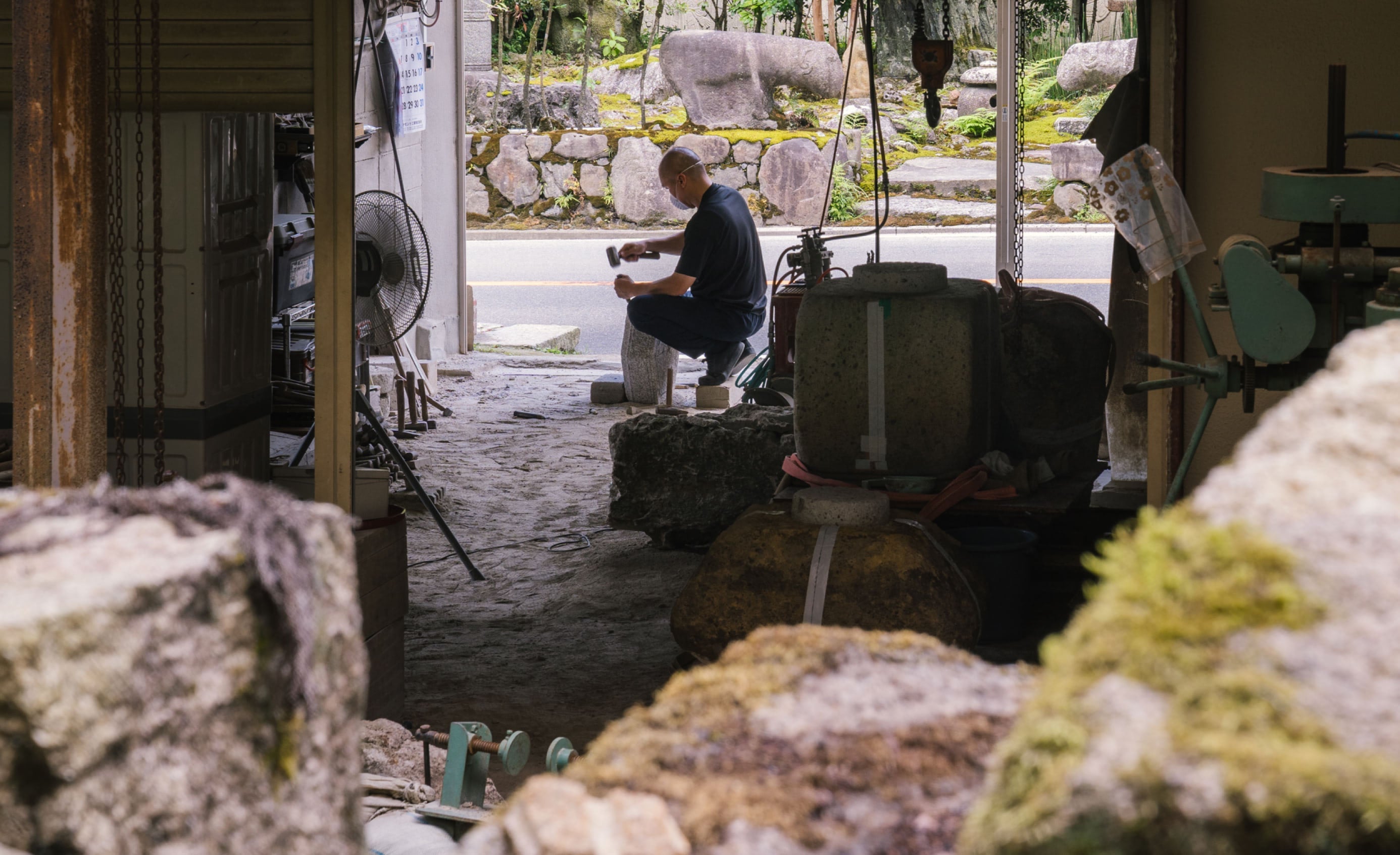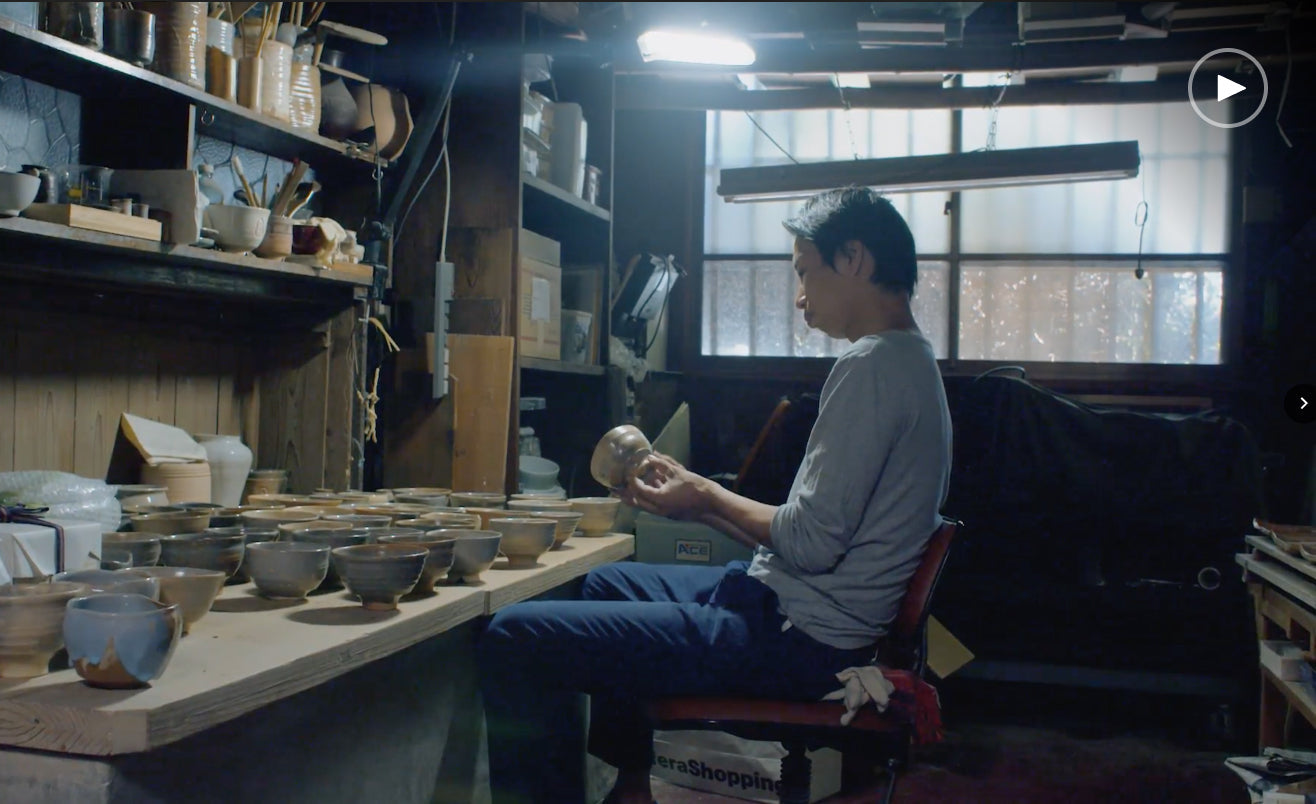Kintsugi gold joinery, is the Japanese art of repairing chipped, cracked, and broken, mostly ceramic and porcelain tableware, using only 100% natural materials including urushi lacquer and finishing with 24K gold powder.
While the intention of Western styles of repair are to mimic the original state and make the repaired item look as though it was never damaged, kintsugi highlights the breakages and celebrates the unique story of the wares that make our house a home.

LACQUERWORK
Our approach to kintsugi technique and logic is borrowed from traditional Japanese lacquerwork, with history that can be traced back nearly 10 thousand years. Excavation sites across the archipelago reveal use of urushi during the Jomon Period (14,000 - 300 BCE) to create and protect nearly every aspect of living.
In Japanese, the synonym for "to live" or "to create living" is ishokujyu, or quite literally clothing, food, and home. With anti-bacterial and anti-pest properties, the use of urushi is present within each of these three building blocks. One way in which urushi was used early on was to soak leaves in urushi to harden together to create bowls.
For the Jomon people, red symbolized life, while black symbolized death. To this day, these colors are the foundation of lacquerwork. Urushi is one of Japanese culture's greatest motifs for the circle of life and our part in ecosystem that is the natural world.
And way before humans, one of the smallest of land's creatures were highly aware of urushi's adhesive strength and durability. Bees use urushi to connect their hives to trees and roofs.
KINTSUGI
There are several stories as to how kintsugi came to be. However it is fairly widely accepted that the technique originates from in and around Shogun Yoshimasa Ashikaga who reigned 1449-1473 during the Muromachi Period. While Shogun Ashikaga's reign is rife with hunger and war, it is quite undisputed that he has served as a key curator of Japanese culture and aesthetic as the world understands it today. Ashikaga enjoyed the arts, including poetry, painting, dance, architecture, and tea. His palace, now known as Ginkaku-ji, is revered for its modesty and simple grandeur. It is here where he studied cha no yu, removing any sliver of excess and paring down tea ceremony to only that of absolutely necessary objects and movement. Ashikaga is said to have stood on the frontlines to proliferate Zen Buddhism, along with cha no yu, ikebana, and the appreciation for what we associate to wabi sabi aesthetic.
As legend has it, Ashikaga inherited a blue porcelain bowl from China. An heirloom passed down through the generations. When it broke, he had it sent to China to be replaced with the latest, most excellent ware. However, it became clear very quickly that there was nothing that would exceed the quality of the bowl, so it was repaired with iron braces to mend the fractures, and sent back to Japan. This is how the concept of repair was seeded into Ashikaga's mind. The blue bowl can still be seen from time to time in special museum exhibits across the country.
He turned to materials and techniques used in traditional Japanese lacquerwork to repair beloved broken wares but in a way that met his aesthetic sensibilities. Ashikaga sought to celebrate the beauty that lies in damage, honing our awareness to both breaking and mending, and restoring wares beautifully so they outlive us. The design made by the gold lines and shapes that emerge from kintsugi-repaired wares is called keshiki, or landscape. Appreciating the keshiki that is the unique history of the ware is part of the kintsugi experience.
Wares are fully repaired with layers of urushi, mixed with other natural materials. The gold finish is only decorative. This is why, we at POJ often find the more appropriate name for this type of repair to be urushitsugi, instead of kintsugi. As a proper nod to urushi as the actual workhorse. Repairs can be finished with red or black urushi, or silver, brass, or tin, instead of gold. All to say that the use of kin, or gold, is only one of the many options.
In applying the technique of traditional Japanese craft and incorporating repaired items to your table, we lean into creating a more sustainably-minded home. Kintsugi could very well be one of the most appropriate and expressive forms of living well. Our repair service by professional craftsmen and active engagement in initiatives to grow raw materials in an environmentally-responsible way are some of the ways we seek to redefine our collective consumer culture.
The repair process involves many layers of urushi. With each step, there is a one week duration where the urushi is aged and hardened in the muro, before moving on to the next step. For a simple repair, it takes about 2 months from start to finish. And for something more complex, larger and with many fragments, the process can take up to a year to complete. The result is an incredibly dear piece, with lines and shapes that highlight its unique story, and yours.



